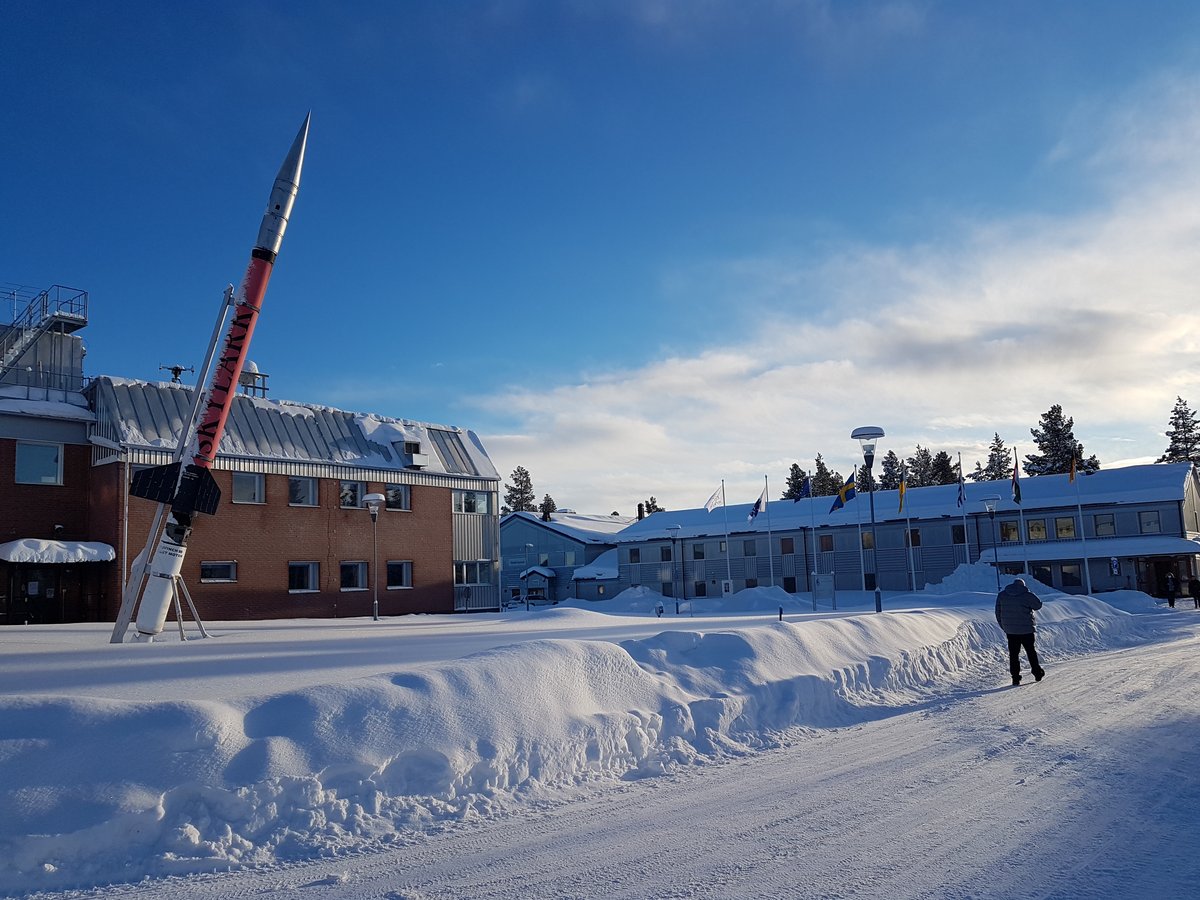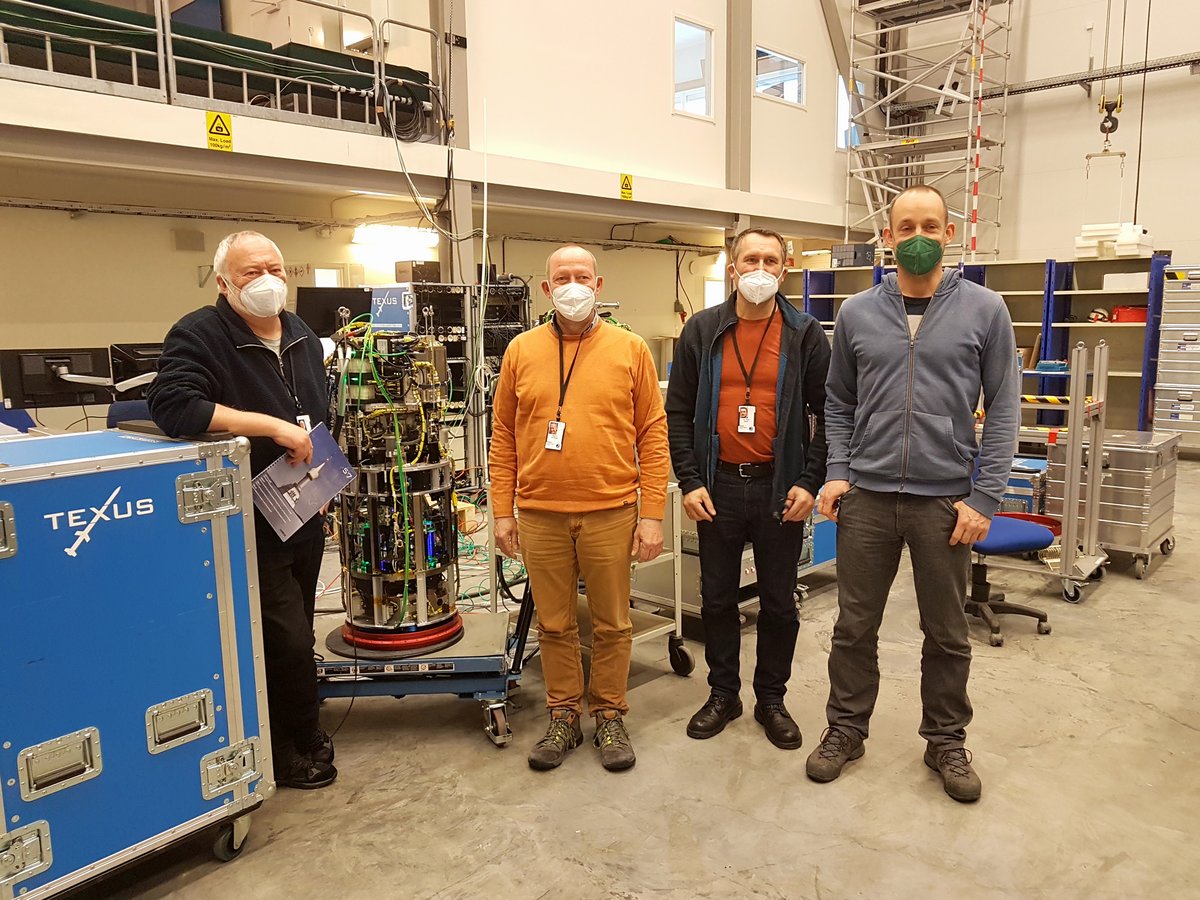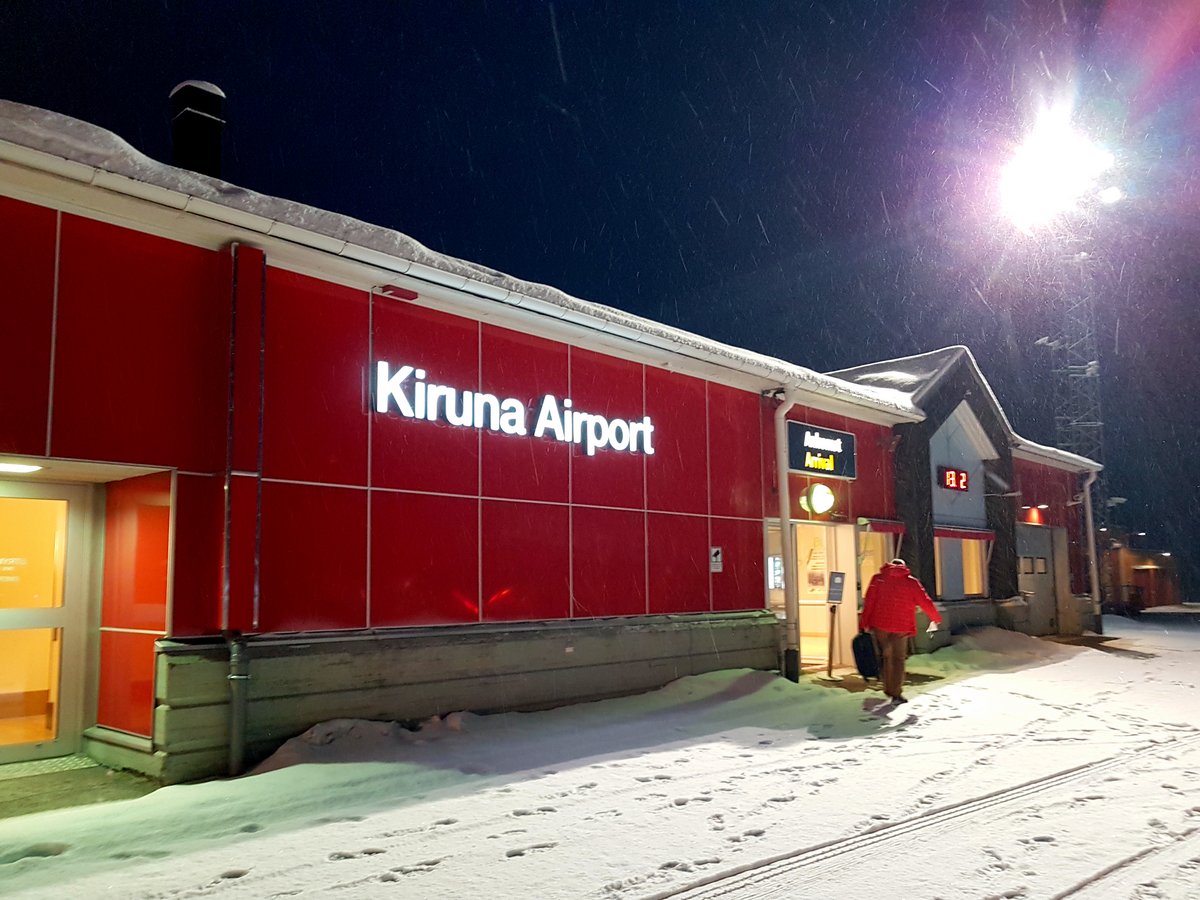BTU flow research at the Arctic Circle
INVITATION to an ONLINE meeting with team in Esrange
If you would like to talk online with Prof. Christoph Egbers and his scientist colleagues Dr. Martin Meier and Dr. Vasyl Motuz, you can register for a webex meeting with them on Monday, Feb. 21, 2022, 11 am - 12 pm with us: presse(at)b-tu.de
Please register by 12 noon on Friday, Feb. 18. Thank you.
It is currently 24 degrees below zero at night at Esrange Station near Kiruna in northern Sweden, and temperatures remain below zero during the day as well. The team of scientists led by Prof. Christoph Egbers from BTU Cottbus-Senftenberg, however, is not bothered by the adverse conditions. They have been working on flow experiments for many years and are now eagerly awaiting the launch of a sounding rocket that will keep their experiment in weightlessness for six minutes.
After twelve successful experimental campaigns so far on thermoelectric convection in free fall during parabolic flight missions in France, this is now the first mission in a sounding rocket. Prof. Christoph Egbers, head of the Chair of Aerodynamics and Fluid Mechanics at BTU Cottbus-Senftenberg, is proud of this and says: "During the rocket flight, our thermoelectric flow experiments can take place in microgravity conditions for about 18 times longer than parabolic flights allow. This significantly increases the quality of the experimental results. The possibility of our experiment flying along as one of four experimental setups is very significant for our research."
The aim of Prof. Christoph Egbers' Chair of Aerodynamics and Fluid Dynamics is to investigate the heat and mass transport in a fluid under space conditions. The findings can be used, for example, to optimise heat exchangers in cooling systems or satellites.
Until the launch, which has now been postponed from 26 to 28 February, many tests will now be realised on site. "It is important to check the fluids carefully," says project manager Dr Martin Meier. "There must be no bubbles in the fluid under any circumstances." Everything must function smoothly until the countdown.
On board the rocket, in addition to the module of the BTU project "TEKUS - thermoelectric convection under weightlessness", are three other experiments from physico-chemical and biological research."
Currently, the BTU's TEKUS module, which is about 40cm wide and 1.1m high, is stored in a laboratory hall, the rocket which has to be installed is located in another hall. All four experiment modules are stacked on top of each other so that they come to a length of about three metres. The rocket, which is over twelve metres long in total, is warmed in the experiment module area so that nothing freezes.
"Between the test runs, it's always a matter of waiting," says Prof. Egbers. The project team has been working towards this point for years. That requires absolutely sure preparation. And that is also what fascinates all of us at the chair: It literally crackles. It's something special and everyone in the team, even those who couldn't travel, is cheering along."
The BTU experiments in the "TEKUS" project are funded by the DLR Space Agency with funds from the BMWi under grant number 50WM1944.
Further information:
About the experiment
Within the project "TEKUS" the influence of an electrohydrodynamic force field on the heat and mass transfer in a cylindrical gap is investigated. The cylinder gap is formed between two vertical tubes placed inside each other and is bounded at the top and bottom by a top and bottom plate. The gap is filled with an electrically non-conductive oil. While the inner tube is heated, the outer tube is cooled from the outside. The temperature difference leads to a base flow. If the temperature difference increases, the basic flow takes on new forms and the heat transfer between the inner and outer tubes is increased. If a force field in the form of an applied alternating voltage now acts on this system, an electro-hydrodynamic force effect is created. Under terrestrial (Earth´s) conditions, this artificial force field disturbs the stability of the buoyancy flow and can amplify the heat transport.
However, under microgravity conditions, such as occur in parabolic and sounding rocket flights, the axial gravitation becomes negligible. The force field created by the high voltage is then the only decisive factor for the emergence of flows in the cylinder gap, which can take on a variety of flow pattern up to turbulent flows. These flow forms - and thus also the heat transport between the inner and outer tubes - can vary with the level of the electrical voltage.
Join via the meeting link
https://b-tu.webex.com/b-tu/j.php?MTID=m028422d35d444019760cf422078350ba
---------------------------------------------------------------------------------------------
Join your Webex meeting at the appropriate time here.
Monday, February 21, 2022
11:00 | (UTC+01:00) Amsterdam, Berlin, Bern, Rome, Stockholm, Vienna | 1 hour
Other methods to join:
Joinvia meeting linkhttps://b-tu.webex.com/b-tu/j.php?MTID=m028422d35d444019760cf422078350ba
Join withmeeting ID
Meeting ID (access code): 2733 793 5865 Meeting password: usQfPcPK733
Tap here to join with mobile device (attendees only)+49-619-6781-9736,,27337935865## Germany Toll
Join via phone+49-619-6781-9736 Germany Toll
Join via video device or application Dial 27337935865@b-tu.webex.com
You can also dial 62.109.219.4 and enter your meeting number.
Need help? Go to https://help.webex.com
Contact
Aerodynamik und Strömungslehre
T +49 (0) 355 69-4868
christoph.egbers(at)b-tu.de
Press contact
Stabsstelle Kommunikation und Marketing
T +49 (0) 355 69-2115
kristin.ebert(at)b-tu.de




